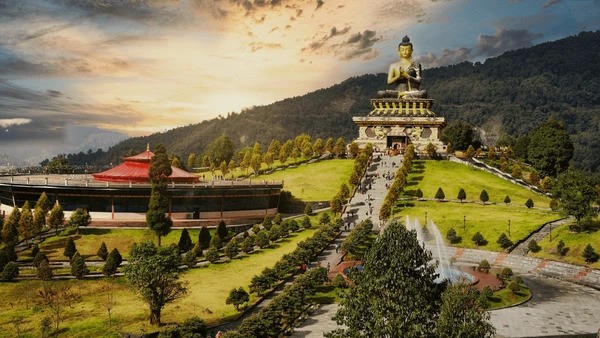Introduction:
Buddhism, one of the world's major religions, traces its roots back to the teachings of Siddhartha Gautama, also known as the Buddha. As Buddhism spread across Asia and beyond, it left an indelible mark on the cultural, historical, and spiritual landscape of numerous countries. Today, embarking on a journey of Buddha Tourism allows enthusiasts to explore the living legacy of Buddhism, connecting with its rich history and experiencing the tranquility and wisdom that permeates through the places associated with the Buddha's life.
Bodh Gaya - The Sacred Ground of Enlightenment:
Bodh Gaya in India stands as the epicenter of Buddhist pilgrimage, drawing millions of visitors each year. It is here, under the Bodhi Tree, that Siddhartha Gautama attained enlightenment and became the Buddha. Pilgrims and tourists alike find solace in the serene atmosphere of the Mahabodhi Temple complex, which houses the sacred Bodhi Tree and the diamond throne, Vajrasana, where the Buddha meditated. The experience of sitting under the same tree where enlightenment dawned over 2,500 years ago is a powerful and transformative one.
Lumbini - The Birthplace of the Buddha:
Lumbini, located in present-day Nepal, is the birthplace of Siddhartha Gautama. The Maya Devi Temple, dedicated to Buddha's mother, stands at the spot where it is believed the Buddha was born. The sacred garden surrounding the temple evokes a sense of peace and spirituality, inviting visitors to reflect on the profound teachings of Buddhism. The Ashoka Pillar, erected by Emperor Ashoka in the 3rd century BCE, further solidifies Lumbini's significance as a UNESCO World Heritage Site.
Sarnath - Where the First Sermon was Preached:
After attaining enlightenment, the Buddha traveled to Sarnath, near Varanasi, to deliver his first sermon. Known as the Deer Park sermon, it laid the foundation of Buddhist teachings. The Dhamek Stupa, marking the spot where the Buddha preached, and the Ashoka Pillar are prominent features in Sarnath. Visitors can explore the archaeological museum, which houses artifacts depicting the life of the Buddha and the spread of Buddhism.
Anuradhapura and Polonnaruwa - Ancient Cities of Sri Lanka:
Sri Lanka boasts a rich Buddhist heritage, with Anuradhapura and Polonnaruwa standing as testimony to the island's historical connection with Buddhism. The Sacred Bo Tree in Anuradhapura is said to be a sapling from the original Bodhi Tree under which the Buddha attained enlightenment. Polonnaruwa, another UNESCO World Heritage Site, is home to well-preserved ruins of ancient stupas, temples, and statues, providing a glimpse into the island's glorious Buddhist past.
Shwedagon Pagoda - Myanmar's Golden Marvel:
In Yangon, Myanmar, the Shwedagon Pagoda stands as a glistening testament to the country's deep-rooted Buddhist traditions. Adorned with gold leaf and crowned with a stupa containing relics of the Buddha, this sacred site radiates spiritual energy. Sunset at the Shwedagon Pagoda is a mesmerizing experience, as the golden structure transforms under the changing hues of the sky.
Conclusion:
Buddha Tourism is not merely a journey through time; it's an exploration of the living legacy of Buddhism that continues to shape the spiritual fabric of diverse cultures. From the sacred Bodhi Tree in Bodh Gaya to the ancient ruins of Anuradhapura, each destination offers a unique perspective on the life and teachings of the Buddha. As travelers embark on this pilgrimage, they not only witness the historical remnants of Buddhism but also have the opportunity to connect with the enduring wisdom and compassion that define this ancient philosophy.

